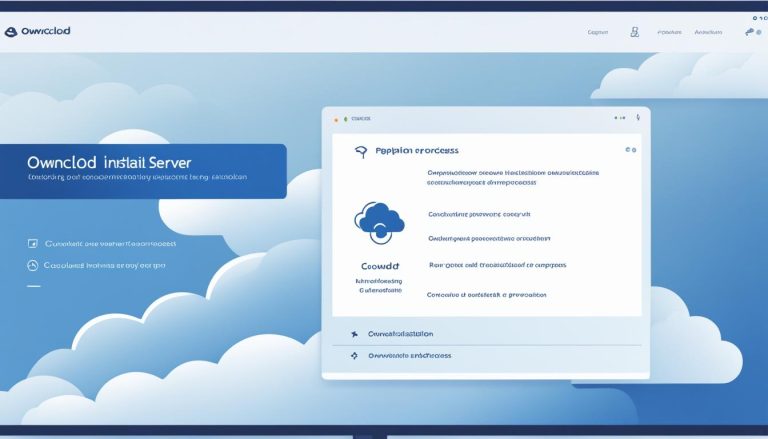What is the Nginx Webserver?
Hello, I’m here to provide you with essential information about the Nginx webserver. Whether you are an aspiring web developer or a business owner looking to optimize your website’s performance, understanding Nginx is crucial in today’s digital landscape. So, let’s dive in!
Nginx is a high-performance web server that excels at handling many concurrent connections and is widely used for serving static content. Its efficient architecture and robust features have made it a popular choice among developers and website administrators.
The configuration file structure of Nginx follows a tree-like format with different contexts that allow for organizational structure and conditional logic. The main context is the broadest environment for Nginx configuration, while the events context is used to set global options for handling connections. The http context is the most common use of Nginx, where configurations for handling HTTP or HTTPS connections are defined. The server context allows for multiple declarations and is used to handle specific subsets of connections. Finally, the location context, nested within the server context, is used to handle specific types of client requests based on location definition matching.
Key Takeaways:
- Nginx is a high-performance web server known for handling many concurrent connections.
- Its configuration file structure follows a tree-like format with various contexts for organization and logic.
- The main, events, http, server, and location contexts are essential components of Nginx configuration.
- Understanding Nginx essentials is vital for optimizing website performance.
- Nginx is widely used for serving static content and excels at load balancing and reverse proxying.
Now that you have a basic understanding of Nginx’s essentials, let’s explore its benefits in more detail. Stay tuned!
The Benefits of Nginx Webserver
Nginx is a powerful web server known for its exceptional performance and resource efficiency. It offers numerous benefits that make it an excellent choice for hosting websites and managing web traffic.
High Performance
Nginx is designed to handle a large number of concurrent connections efficiently. Its event-driven architecture allows it to serve multiple requests simultaneously, ensuring fast and responsive web services. This high performance is crucial for websites that experience heavy traffic and need to deliver content quickly.
Low Resource Usage
Compared to other web servers, Nginx has a minimal memory footprint and consumes fewer system resources. This means that it can handle more connections and deliver content efficiently without putting a strain on the server. Nginx’s optimized resource usage contributes to improved server performance and cost-effectiveness.
Load Balancing
Nginx excels at load balancing, which is the distribution of incoming web traffic across multiple servers. This feature enhances the availability and reliability of websites by preventing any one server from becoming overwhelmed. Load balancing ensures optimal server performance and reduces the risk of downtime, resulting in a seamless user experience.
Reverse Proxy
As a reverse proxy, Nginx acts as an intermediary server between clients and backend servers. It helps enhance security by isolating the internal server infrastructure from external clients. Additionally, Nginx provides performance optimizations by offloading resource-intensive tasks from the backend servers, resulting in improved response times and server efficiency.
Static Content Delivery
Nginx’s efficient handling of static content enables fast and reliable delivery of files such as HTML, CSS, JavaScript, and images. It can serve these files directly, eliminating the need to pass requests to backend servers, which reduces server load and improves overall website performance.
“Nginx’s high performance, low resource usage, load balancing capability, reverse proxy functionality, and efficient static content delivery make it an invaluable tool for website optimization and management. Its ability to handle heavy traffic and deliver content quickly and reliably sets it apart from other web servers.”
Next, let’s compare Nginx with its popular counterpart, Apache, to gain a better understanding of their respective strengths and weaknesses.
NGINX vs Apache: A Comparison
When it comes to web server software, two popular options are NGINX and Apache. While both are widely used, they have different approaches and capabilities that cater to specific needs. Understanding their differences can help you make an informed decision for your web application.
NGINX: High Concurrency and Low Resource Usage
NGINX utilizes an event-driven, asynchronous architecture that allows for high concurrency and optimal resource usage. This makes it an excellent choice for serving static content and handling high traffic volumes.
“NGINX’s event-driven architecture enables it to handle thousands of concurrent connections with minimal resource consumption.”
Apache: Flexibility and Dynamic Content Processing
Apache, on the other hand, follows a process-based model where a new process is created for each request. This approach provides more flexibility and is suitable for complex configurations and dynamic content processing.
“Apache’s process-based model allows for greater flexibility in handling a variety of configurations and dynamic content requirements.”
The choice between NGINX and Apache depends on the specific requirements of your web application. If you prioritize high performance, low resource usage, and efficient handling of static content, NGINX may be the optimal choice. On the other hand, if your application requires complex configurations or extensive dynamic content processing, Apache might better suit your needs.
NGINX vs Apache: A Comparison Table
| Feature | NGINX | Apache |
|---|---|---|
| Architecture | Event-driven, asynchronous | Process-based |
| Concurrent Connections | High | Dependent on server configuration |
| Resource Usage | Low | Dependent on server configuration |
| Static Content Handling | Excellent | Good |
| Complex Configurations | Not as flexible | More flexible |
| Dynamic Content Processing | Limited | Extensive |
As the table illustrates, NGINX excels in terms of high concurrency, low resource usage, and efficient handling of static content, while Apache offers more flexibility in complex configurations and dynamic content processing.
Ultimately, the decision between NGINX and Apache will heavily depend on your web application’s specific requirements and performance objectives.
How to Install and Configure Nginx
When it comes to installing Nginx, it is recommended to use a Linux-based system such as Ubuntu. Following the installation instructions specific to your distribution will ensure a smooth installation process. Once Nginx is installed, it can be configured to suit your needs, whether it be for web hosting or SSL/TLS encryption.
To effectively manage Nginx configuration files, it’s beneficial to have familiarity with the Linux terminal and basic Unix programs. This knowledge allows for seamless configuration and customization of Nginx to optimize performance and security.
For those seeking more streamlined deployment options, consider utilizing tools like the Vagrant virtual machine and Hostinger VPS hosting plans. These solutions provide optimized environments for running and managing Nginx, enabling easy setup and maintenance.
Tips for Installing and Configuring Nginx:
- Choose a Linux-based system, such as Ubuntu, for seamless Nginx installation.
- Follow the installation instructions specific to your Linux distribution.
- Utilize the Linux terminal and basic Unix programs for efficient management of Nginx configuration files.
- Consider using tools like Vagrant and Hostinger VPS hosting for streamlined deployment and optimization.

| Installation Steps | Configuration Tips |
|---|---|
| 1. Choose a Linux-based system like Ubuntu. | – Familiarize yourself with the Linux terminal and basic Unix programs. |
| 2. Follow distribution-specific installation instructions. | – Use Nginx configuration files to customize settings for web hosting and SSL/TLS encryption. |
| 3. Verify the successful installation by accessing the Nginx default page. | – Regularly update and monitor Nginx for enhanced security and performance. |
| 4. Leverage tools like Vagrant for easy virtual machine setup. | – Consider load balancing and reverse proxy configurations to distribute traffic efficiently. |
| – Implement SSL/TLS certificates for secure communication with website visitors. |
Conclusion
Nginx is a powerful web server software that excels in performance, versatility, and scalability. Its ability to handle numerous concurrent connections and efficiently serve static content makes it a top choice for web applications. With its robust features, Nginx goes beyond simply serving web pages, offering load balancing, reverse proxying, and secure communication through SSL/TLS.
One of the key advantages of Nginx is its high performance and low resource usage. It is designed to handle a large number of concurrent requests, making it ideal for websites with high traffic. Nginx’s efficient handling of static content enables fast and reliable delivery of files, improving the overall user experience.
Furthermore, Nginx’s versatility allows it to adapt to various use cases. It can be configured as a load balancer, distributing incoming web traffic across multiple servers to ensure availability and maintain server performance. Its reverse proxy capabilities provide additional security and performance optimizations for client requests. Additionally, Nginx supports SSL/TLS encryption, allowing for secure communication between servers and clients.
Understanding Nginx’s configuration and installation process is crucial to fully leverage its capabilities. Whether you are setting up web hosting or implementing SSL/TLS encryption, familiarity with Nginx’s configuration files and Linux terminal commands ensures optimal utilization of this powerful web server software. By harnessing Nginx’s performance, versatility, and scalability, web applications can thrive in delivering exceptional user experiences.
FAQ
What is the nginx webserver?
Nginx is a high-performance web server known for its efficiency in handling many concurrent connections and serving static content.
What are the benefits of using the Nginx webserver?
Nginx offers high performance, low resource usage, load balancing, reverse proxying, and efficient delivery of static content.
How does Nginx compare to Apache?
Nginx and Apache are both popular web server software but differ in their architecture and capabilities. Nginx excels at high concurrency and serving static content, while Apache is more flexible and suitable for complex configurations and dynamic content processing.
How do I install and configure Nginx?
To install Nginx, it is recommended to use a Linux-based system and follow the installation instructions specific to your distribution. Once installed, Nginx can be configured for web hosting and SSL/TLS encryption. Familiarity with the Linux terminal and basic Unix programs is helpful for managing Nginx configuration files.
What is the conclusion about Nginx as a web server software?
Nginx is a powerful web server software that offers high performance, low resource usage, scalability, and various features like load balancing and secure communication. Understanding Nginx’s configuration and installation process allows for optimal utilization and improved website performance.
- About the Author
- Latest Posts
Matthias Böhmichen is the founder of howto-do.it . He is using Linux since 1991 and fell in love with windows a few years later. He likes to discover new technologies, especially hard- and software.






